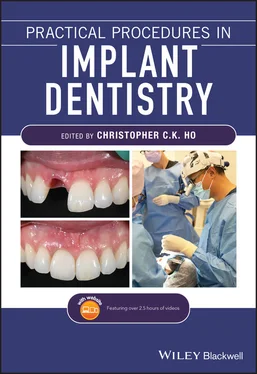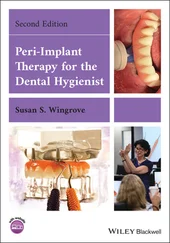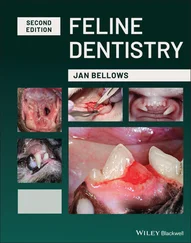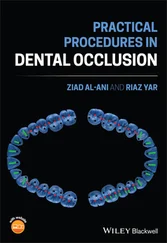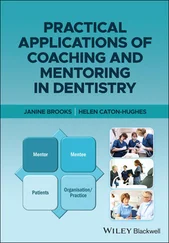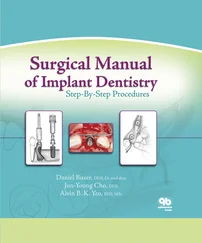Evaluate the pre‐extraction hard and soft tissue contours at the site of anticipated tooth loss. Carefully consider how the mean horizontal and vertical (3.87 and 1.67 mm, respectively) reduction of the ridge might influence the planned surgical and restorative treatment.
Utilise conventional radiography and, where indicated, three‐dimensional imaging via cone beam computed tomography (CBCT) to assess the condition of the alveolar process, the buccal plate thickness, presence or absence of periapical pathology, and the proximity of important anatomical features prior to tooth extraction.
Extract the tooth in an atraumatic manner in order to preserve the bone of the residual extraction socket and avoid iatrogenic trauma to the bone or soft tissues, which may lead to increased dimensional changes of the healed ridge.
Upon removal of the tooth, thoroughly debride and explore the socket. Eliminate any soft tissue remnants and determine the relative continuity of the bony walls of the socket. Consider the benefits of no intervention versus ridge preservation versus ridge augmentation on the site of tooth loss and any future restorative treatment.
The bone biotype can be estimated by running a gloved finger across the buccal surfaces of the maxillary and mandibular arches, feeling for root prominences. A smooth ridge may indicate a favourable bony contour following extraction, whereas a ridge which has significant bony prominences may result in considerable buccal bone loss following exodontia.
1 1 Gerritsen, A., Allen, P., Witter, D. et al. (2010). Tooth loss and oral‐health related quality of life: A systematic review and meta‐analysis. Health and Quality of Life Outcomes 8: 126–136.
2 2 Schroeder, H. (1986). The periodontium. In: Handbook of Microscopic Anatomy, vol. 5 (eds. A. Oksche and L. Vollrath), 233–246. Berlin: Springer.
3 3 Amler, M. (1969). The time sequence of tissue regeneration in human extraction wounds. Oral Surgery Oral Medicine Oral Pathology 27: 309–318.
4 4 Cardaropoli, G., Araujo, M., and Lindhe, J. (2003). Dynamics of bone tissue formation in tooth extrtaction sites. Journal of Clinical Periodontology 30: 809–818.
5 5 Trombelli, L., Farina, R., Marzola, A. et al. (2008). Modeling and remodeling of human extraction sockets. Journal of Clinical Periodontology 35: 630–639.
6 6 Evian, C., Rosenberg, E., Coslet, J., and Corn, H. (1982). The osteogenic activity of bone removed from healing extraction sites in humans. Journal of Periodontology 53: 81–85.
7 7 Van der Weijden, F., Dell'Acqua, F., and Slot, D. (2009). Alveolar bone dimensional changes of post‐extraction sockets in humans: A systematic review. J Clin Periodontol 36: 1048–1058.
8 8 Lekovic, V., Camargo, P., Klokkevold, P. et al. (1998). Preservation of alveolar bone in extraction sockets using bioabsorbable membranes. Journal of Periodontology 69: 1044–1049.
9 9 Lekovic, V., Kenney, E., Weinlaender, M. et al. (1997). A bone regenerative approach to alveolar ridge maintenance following tooth extraction. Report of 10 cases. Journal of Periodontology 68: 563–570.
10 10 Pinho, M., Roriz, V., Novaes, A. Jr. et al. (2006). Titanium membranes in prevention of alveolar collapse after tooth extraction. Implant Dentistry 15: 53–61.
11 11 Chappuis, V., Engel, O., Shahim, K. et al. (2015). Soft tissue alterations in esthetic post‐extraction sites: A three dimensional analysis. Journal of Dental Research 94 (Suppl): 187–193.
12 12 Zweers, J., Thomas, R., Slot, D. et al. (2014). Characteristics of periodontal biotype, its dimensions, associations, and prevalence: A systematic review. J Clinical Periodontology 41: 958–971.
13 13 Farmer, M. and Darby, I. (2014). Ridge dimensional changes following single‐tooth extraction in the aesthetic zone. Clinical Oral Implant Research 25: 272–277.
14 14 Saldanha, J., Casati, M., Neto, F. et al. (2006). Smoking may affect the alveolar process dimensions and radiographic bone density in maxillary extraction sites: A prospective study in humans. Journal of Oral and Maxillofacial Surgery 63: 1359–1365.
15 15 Chen, S., Wilson, T. Jr., and Hammerle, C. (2004). Immediate or early placement of implants following tooth extraction: review of biological basis, clinical procedures, and outcomes. Int J Oral Maxillofacial Implants 19: 12–25.
16 16 Kayser, A. (1981). Shortened dental arches and oral function. Journal of Oral Rehabilitation: 457–462.
17 17 Davis, D.F., Scott, B., and Redford, D. (2000). The emotional effects of tooth loss: A preliminary quantitative study. British Dental Journal 188 (9): 503–506.
18 18 Osterberg, T. and Carlsson, G. (2007). Dental state, prosthodontic treatment and chewing ability ‐ A study of five cohorts of 70 year‐old subjects. J Oral Rehabilitation 34: 553–559.
19 19 Mojon, P. (2003). The world without teeth: Demographic trends. In: Implant Overdentures: The standard of care for edentulous patients (eds. J. Feine and G.E. Carlsson), 3–14. Chicago: Quintessence.
20 20 Marcus, S., Drury, T., Brown, L., and Zion, G. (1996). Tooth retention and tooth loss in the permanent dentition of adults: United States 1988 ‐ 1991. J Dent Research 75: 684–695.
21 21 Cronin, M., Meaney, S., Jepson, N., and Allen, P. (2009). A qualitative study of trends in patient preferences for the management of the partially dentate state. Gerodontology 26: 137–142.
6 Anatomic and Biological Principles for Implant Placement
Kyle D. Hogg
Possessing a thorough knowledge of oral and maxillofacial anatomical structures is a prerequisite to providing safe, effective, and predictably successful implant surgery. Accurate assessment of a patient's anatomy during a pre‐surgical evaluation is vitally important not only to develop a comprehensive plan of treatment, but also to limit the potential risks of surgical complications. Comprehensive medical histories, patient interviews, and clinical exams should be supplemented by conventional two‐dimensional radiography and three‐dimensional imaging, where indicated, to provide the surgeon with sufficient information regarding pertinent anatomy. This chapter will provide an overview of important anatomical structures of the head and neck, focusing on the osteology, vascularity, innervation, and musculature of the region. (For more information on the placement of dental implants in proximity to specific vital anatomical structures please refer to Chapters 7and 8.)
The skull is the skeletal structure of the head that serves to protect the brain and support the face. In the adult, the skull consists of 22 individual bones (8 paired bones, 6 single bones), 21 of which are immobile and combined into a single unit. The 22nd bone is the mandible, which, uniquely, is the only moveable bone of the skull. The skull can be further subdivided into the cranial bones (numbering 8) and facial bones (numbering 14). The cranial bones collectively form the cranial vault, which protects the brain and houses both middle and inner ear structures. The facial bones support the facial structures, form the nasal cavity and the orbit, and house the teeth. The facial bones are of particular importance in relation to dentofacial aesthetics and implantology, with the paired bones of the maxilla, palatine, and zygomatic arches as well as the single bone of the mandible routinely involved in implant treatment. Table 6.1gives a summary of the bones comprising the skull [1]. Figures 6.1– 6.3show for skull osteology schematics and articulation.
Table 6.1 Osteology summary.
Source: Norton, N. (2007). Netter's Head and Neck Anatomy for Dentistry . Philadelphia: Saunders Elsevier. ©2007, Elsevier.
Читать дальше
